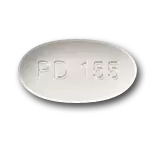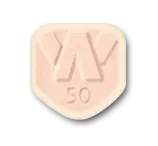Join Today & Get 4% Cash Back Then 6, 7...Up to 10% Off Reorders!
Online Pharmacy Dictionary
Find drugs by alphabetical list:
A B C D E F G H I J K L M N O P Q R S T U V W X Y Z View All
News on Valstar (valrubicin)
Looking Into Pharmas - Seeking Alpha
Looking Into PharmasSeeking Alpha... Valstar, a sterile solution for intravesical instillation of valrubicin and BCG-refractory CIS of the bladder; Hydron Implant, a reservoir-based drug ...and more��
Valstar (valrubicin)
Last updated on: Jan 24, 2007
| Brand Name: | Valstar |
| Active Ingredient: | valrubicin |
| Strength(s): | 40mg/ml |
| Dosage Form(s): | Intravesical Sterile Solution |
| Company Name: | Anthra Pharmaceuticals |
| Availability: | Prescription only, hospital use only |
| *Date Approved by the FDA: | September 25, 1998 |
|
*Approval by FDA does not mean that the drug is available for consumers at this time.
This information is provided by the U.S. Food & Drug Administration.
For more information about this drug, click here.
|
|
What is Valstar used for?
Valstar is used for treatment of patients with BCG-resistant cancer of the urinary bladder for whom surgical removal of the bladder is not safe. Treatment with Valstar is through drug instillation into the urinary bladder.
Who should not be treated with Valstar?
You should not be given Valstar if you have any of the following conditions:
- Known reaction to other drugs that are similar to Valstar or Cremophor? EL
- Urinary tract infection at the time of treatment
- Small bladder capacity (i.e., unable to tolerate a 75ml instillation)
Special Warning(s) with Valstar:
Valstar has been shown to bring about temporary disappearance of cancer in only about 1 in 5 patients with treatment-resistant bladder cancer. Delaying surgical removal of all or part of the bladder could lead to the spread of bladder cancer, which is deadly. The risk of bladder cancer spreading to other parts of the body from the delay of needed surgery may be difficult to determine but will increase the longer it is delayed.
Your doctor will evaluate and monitor your response to treatment with Valstar to decide whether surgery should be reconsidered.
Certain conditions of the bladder may delay or prevent treatment with Valstar. Your doctor will evaluate you to determine if you are a candidate for treatment with Valstar.
General Precautions with Valstar:
You should discuss with your doctor the risks involved with delaying surgery, which could lead to bladder cancer spreading to other parts of your body (See Special Warnings).
Side effects from treatment with Valstar mainly involve irritable bladder symptoms (e.g., bladder spasm, spontaneous discharge of Valstar) occurring during treatment with Valstar or shortly after treatment. For the first 24 hours after treatment with Valstar, most patients have red-colored urine.
Tell your doctor immediately if you experience any continued irritable bladder symptoms or if you have red-colored urine after the first 24 hours following treatment.
Men and women of childbearing age should use an effective birth control method during the Valstar treatment period.
Women: Tell your doctor if you are trying to become pregnant, are already pregnant, or are breast-feeding. You should not become pregnant while being treated with Valstar.
Men: Do not engage in sexual activity that could lead to pregnancy while being treated with Valstar.
What are some possible side effects of Valstar? (This is NOT a complete list of side effects reported with Valstar. Your health care provider can discuss with you a more complete list of side effects.)
Side effects with Valstar usually occur during or shortly after treatment and stop within 1 to 7 days after Valstar is removed from the bladder, including:
- Urinating too often
- Difficulty or pain during urination
- Urge to urinate immediately
- Bladder spasm
- Blood in the urine
- Bladder pain
- Inability to control urination
- Swelling of the bladder
- Waking up at night to urinate
- Burning sensation
Most side effects occurring outside the bladder are mild and disappear within 24 hours after treatment. These include stomach pain, nausea and urinary tract infections.
Today's Top
Sellers
Recognized by
COMPARE ONLINE PHARMACY PRICES:
Accupril
Actonel
Actos
Allegra
Altace
Atenolol
Avandia
Celebrex
Celexa
Cialis
Coreg
Cozaar
Crestor
Diovan
Effexor
Evista
Flomax
Fluoxetine
Fosamax
Glucophage
Latisse
Levitra
Levoxyl
Lexapro
Lipitor
Lisinopril
Metformin
Neurontin
Nexium
Norvasc
Paxil
Plavix
Pravachol
Premarin
Prevacid
Prilosec
Propecia
Protonix
Prozac
Seroquel
Simvastatin
Singulair
Toprol-XL
Viagra
Zetia
Zithromax
Zocor
Zoloft
Zyprexa
Zyrtec




